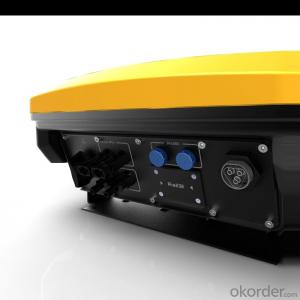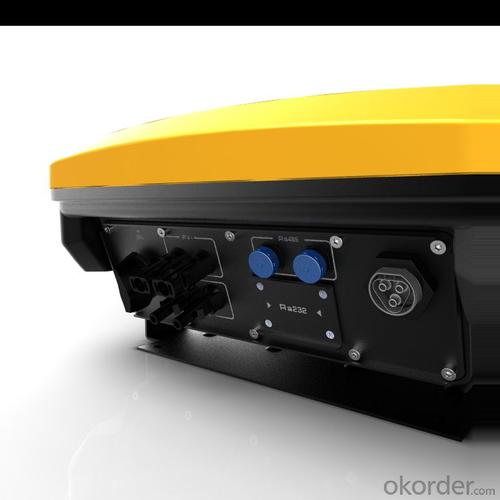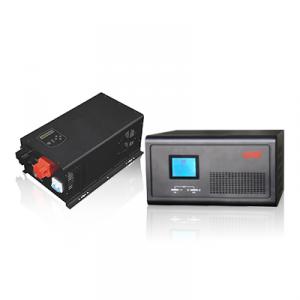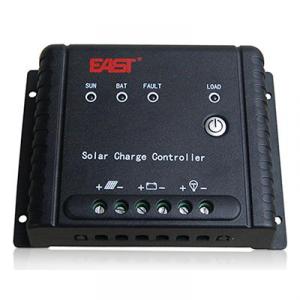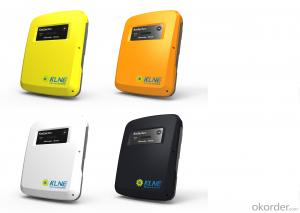Cps Solar Inverter Solartec Central 50 On-Grid Inverter
- Loading Port:
- China Main Port
- Payment Terms:
- TT OR LC
- Min Order Qty:
- -
- Supply Capability:
- -
OKorder Service Pledge
Quality Product, Order Online Tracking, Timely Delivery
OKorder Financial Service
Credit Rating, Credit Services, Credit Purchasing
You Might Also Like
Solartec Central 50 uses a low frequency transformer. It securely connects the inverter to the grid. The wide range of DC input raises the generating efficiency and return, and facilitates the combination of PV modules. The highest working altitude is 6000m (If above 3000m, it should be derated before use.) and is suitable for use in various geographical environments.
Efficient
■ Efficiency of up to 98.3 %
Flexible
■ Reactive power supply
■ Extended temperature range from -25°C ~ +55°C
■ Compact dimensions, easier installation
Reliable
■ Active and passive islanding detection
■ Powerful grid management function
■ Low-voltage ride through function
Communicative
■ Optical fiber remote monitoring
- Q: Can a solar inverter be used with a solar-powered greenhouse system?
- Yes, a solar inverter can be used with a solar-powered greenhouse system. A solar inverter converts the direct current (DC) generated by solar panels into alternating current (AC) that can be used to power electrical devices in the greenhouse system. This allows for efficient utilization of solar energy for various applications such as lighting, ventilation, irrigation, and temperature control within the greenhouse.
- Q: How does a solar inverter handle voltage regulation during fault conditions?
- A solar inverter handles voltage regulation during fault conditions by quickly detecting any abnormal voltage fluctuations or faults in the system. It then uses various protective mechanisms such as voltage control algorithms, circuit breakers, and fault detection systems to prevent overvoltage or undervoltage situations. The inverter may also isolate itself from the grid to avoid any potential damage or safety hazards.
- Q: How does a solar inverter protect against lightning strikes?
- A solar inverter typically protects against lightning strikes by incorporating surge protection devices and grounding systems. These features help to divert the excess energy caused by a lightning strike away from the sensitive electronic components of the inverter, preventing damage and potential electrical hazards.
- Q: How does a solar inverter synchronize with the grid?
- A solar inverter synchronizes with the grid by constantly monitoring the grid's voltage and frequency. It adjusts its own output to match the grid's characteristics, ensuring that the electricity it generates is in phase with the grid's power supply. This synchronization process allows the solar inverter to seamlessly connect and feed electricity into the grid, maximizing the efficiency and reliability of the solar power system.
- Q: How does a solar inverter impact the overall system reliability?
- A solar inverter plays a crucial role in the overall system reliability as it converts the direct current (DC) generated by solar panels into alternating current (AC) that can be used to power household appliances or be fed into the grid. It ensures the reliable and efficient functioning of the entire solar power system by optimizing power output, managing voltage levels, and protecting against various electrical faults. A high-quality solar inverter enhances system performance, improves energy yield, and minimizes downtime, ultimately increasing the overall reliability of the solar power system.
- Q: Can a solar inverter be used with a wireless communication system?
- Yes, a solar inverter can be used with a wireless communication system. Many modern solar inverters are equipped with built-in wireless communication capabilities, such as Wi-Fi or Bluetooth, to enable monitoring and control of the solar system remotely. This allows users to access real-time data, adjust settings, and receive notifications about their solar energy production and consumption through a wireless connection.
- Q: Can a solar inverter be used in systems with different module currents?
- Yes, a solar inverter can be used in systems with different module currents. Solar inverters are designed to convert the DC power produced by the solar panels into AC power for use in the electrical grid or for powering appliances. They typically have a wide range of input voltage and current ratings to accommodate different solar panel configurations. As long as the total power output of the solar panels is within the specifications of the inverter, it can be used in systems with varying module currents.
- Q: Can a solar inverter be used in a solar-powered data center?
- Yes, a solar inverter can be used in a solar-powered data center. A solar inverter is an essential component that converts the DC (direct current) electricity generated by solar panels into AC (alternating current) electricity that can be used to power various devices, including data center equipment. By utilizing a solar inverter, a solar-powered data center can efficiently harness the electricity generated by solar panels and integrate it into its power supply system.
- Q: Are there any voltage or frequency regulations for solar inverters?
- Yes, there are voltage and frequency regulations for solar inverters. These regulations vary from country to country and are typically set by regulatory bodies or standardization organizations. In most countries, solar inverters must comply with specific voltage and frequency limits to ensure the safe and reliable operation of the electrical grid. Voltage regulations specify the allowable range of output voltage that a solar inverter can provide to the grid. This ensures that the voltage remains within acceptable limits to prevent overvoltage or undervoltage conditions that could damage electrical equipment or disrupt the grid's stability. The specific voltage limits depend on factors such as the type of grid system (e.g., single-phase or three-phase) and the voltage levels used in the country. Frequency regulations, on the other hand, define the acceptable range of output frequency that a solar inverter can provide to the grid. Grid frequency is typically set at a specific value (e.g., 50 Hz or 60 Hz) and solar inverters must synchronize their output frequency with the grid to ensure compatibility. Deviations from the specified frequency can lead to issues such as equipment malfunction or instability in the grid. Compliance with voltage and frequency regulations is crucial for solar inverters to ensure the proper integration of renewable energy sources into the electrical grid. In many countries, solar inverters must adhere to specific technical standards or certifications to demonstrate their compliance with these regulations. These standards often cover various aspects of inverter performance, including voltage and frequency control, power quality, and grid interaction.
- Q: How does a solar inverter affect the value of a property?
- A solar inverter can positively affect the value of a property by making it more attractive to potential buyers. It increases the property's energy efficiency and reduces electricity costs, which can be a significant factor for buyers looking for sustainable and cost-effective homes. Additionally, having a solar inverter installed demonstrates the property's commitment to renewable energy, which can be appealing to environmentally-conscious buyers.
Send your message to us
Cps Solar Inverter Solartec Central 50 On-Grid Inverter
- Loading Port:
- China Main Port
- Payment Terms:
- TT OR LC
- Min Order Qty:
- -
- Supply Capability:
- -
OKorder Service Pledge
Quality Product, Order Online Tracking, Timely Delivery
OKorder Financial Service
Credit Rating, Credit Services, Credit Purchasing
Similar products
Hot products
Hot Searches
Related keywords
